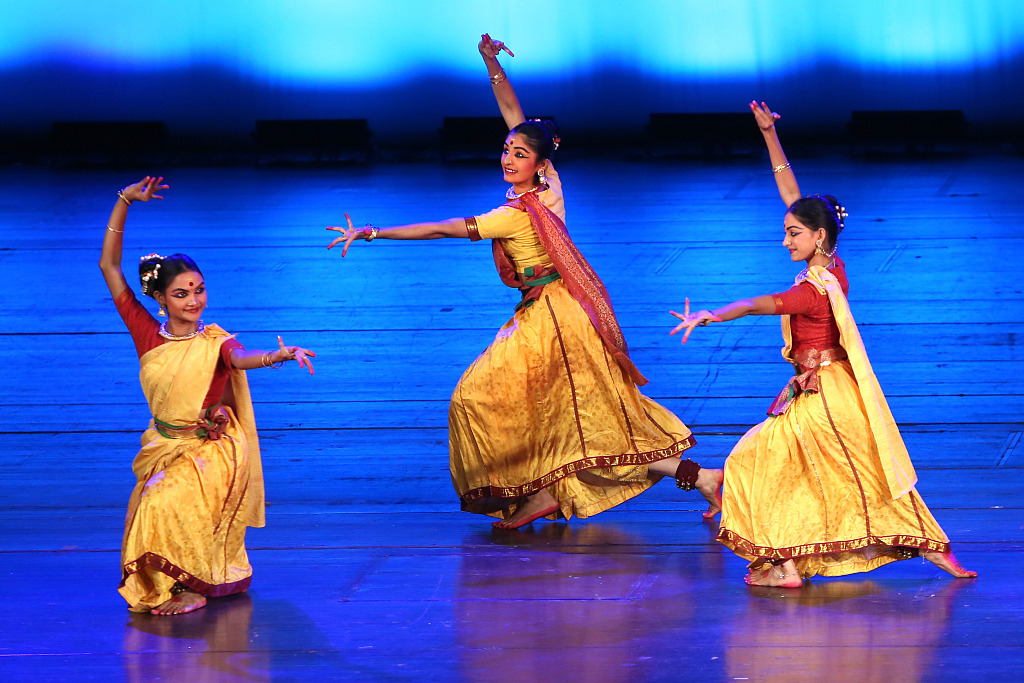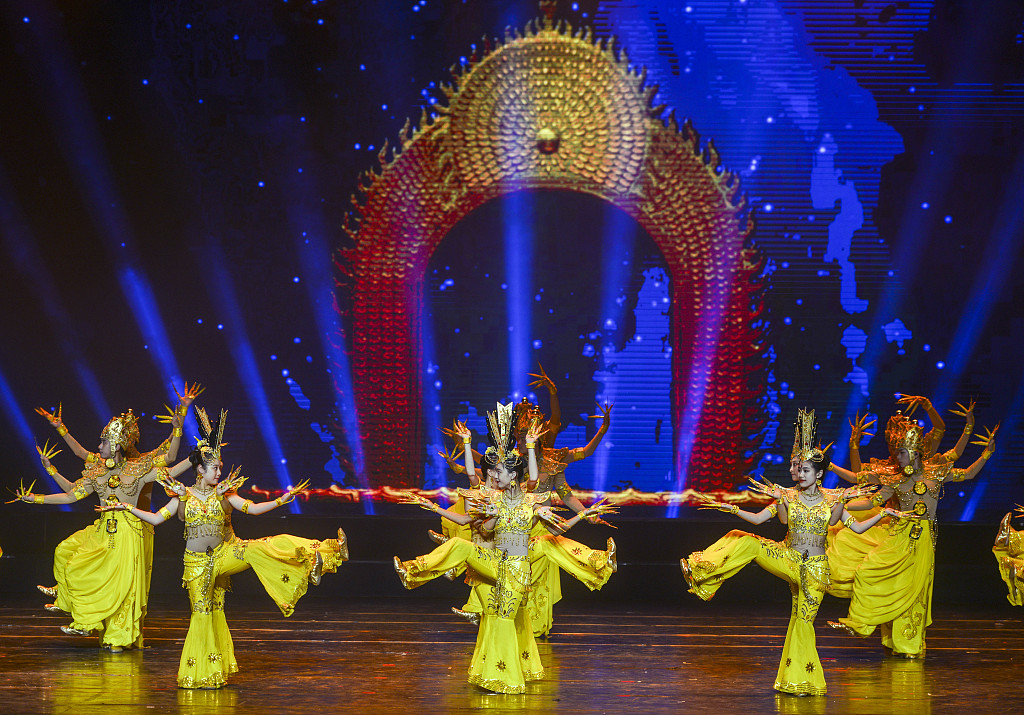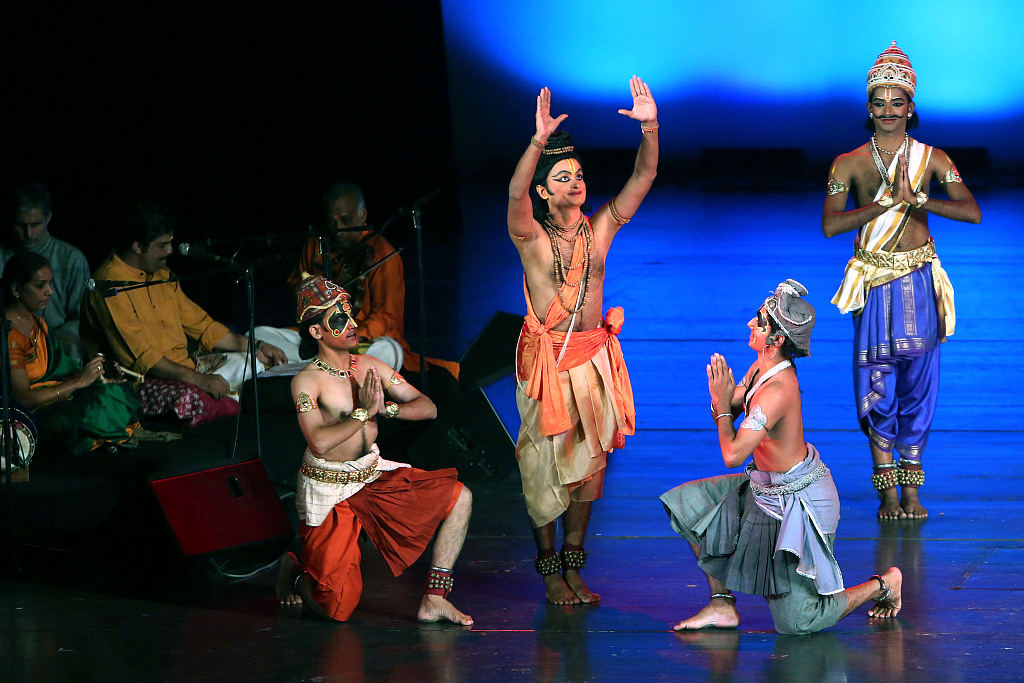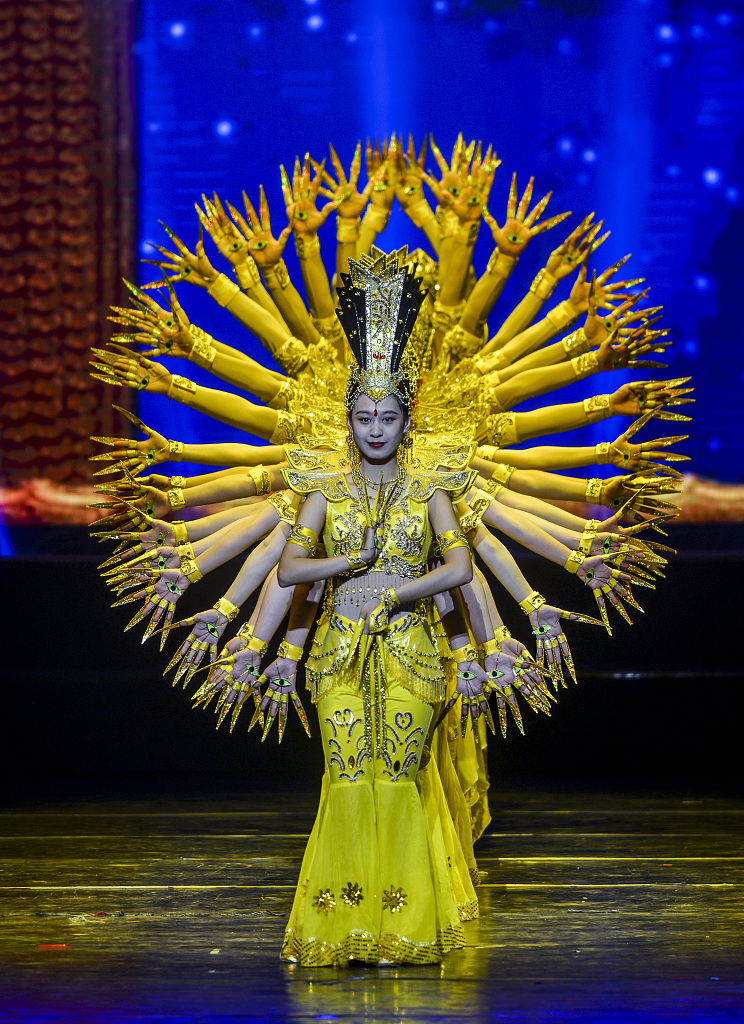
This file photo shows Indian dancers performing at the Shanghai Oriental Art Center. /CFP
This file photo shows Indian dancers performing at the Shanghai Oriental Art Center. /CFP
Both Indian and Chinese classical dances boast a long history of cultural inheritance. The extensive interchanges in musical and dance traditions between the two countries date back to 200 AD.
The definition of Chinese classical dance encompasses a series of dance forms that have evolved from ancient court music and dance to the present day. In ancient China, the development of dance was supported by feudal dynasties. The prosperity of the dynasties gave rise to solemn and dignified court music and dance. However, as the dynasties declined, court music and dance gradually moved from the palace to the people and became integrated into folk dances, operas, acrobatics and other art forms – where they were passed down much more widely.

A file photo shows Chinese dancers performing the Thousand-hand Kwan-yin in Urumqi, Xinjiang. /CFP
A file photo shows Chinese dancers performing the Thousand-hand Kwan-yin in Urumqi, Xinjiang. /CFP
The development of Indian classical dance has its roots in robust religious systems. Generation after generation of dedicated dancers in temples passed down the tradition of Indian classical dance. Although the original dancers are no longer present, they as the earliest professional dancers in India have left an indelible mark on the development of classical dance.

This file photo shows Indian dancers performing at the Shanghai Oriental Art Center. /CFP
This file photo shows Indian dancers performing at the Shanghai Oriental Art Center. /CFP
The content of Indian classical dance draws inspiration from religious stories and mythical legends. It can present a variety of themes featuring colorful legends, serving both as entertainment and solemn religious rituals. There are pure dance and mime performances in Indian classical dance.
Bharatanatyam, a type of Indian classical dance, is primarily a form of mime. Through movements of different body parts, it conveys rich thoughts and emotions, encompassing themes like war, love and hatred. The movements of Bharatanatyam are vigorous and powerful, with a broad range, and its rapid changes resemble a kaleidoscope.

A file photo shows Chinese dancers performing the Thousand-hand Kwan-yin in Urumqi, Xinjiang. /CFP
A file photo shows Chinese dancers performing the Thousand-hand Kwan-yin in Urumqi, Xinjiang. /CFP
The range of Chinese classical dance forms is similarly diverse. The Han (206-220) and Tang (618-907) forms of opera combine the dance styles from those eras and other historical periods with contemporary ways of reinterpreting them. The Dunhuang style draws from the exquisite murals and countless artistic images found in the Mogao Caves.
During the 2005 Spring Festival Gala, the Thousand-hand Kwan-yin dance performed by 21 Chinese deaf-mute dancers amazed viewers. The Thousand-hand Kwan-yin dance is inspired by Han and Tang music and dance, and through innovative adaptation, it presents the majestic appearance of the Thousand-hand Kwan-yin deity with remarkable expressiveness, embodying both artistic and humanistic sentiments.